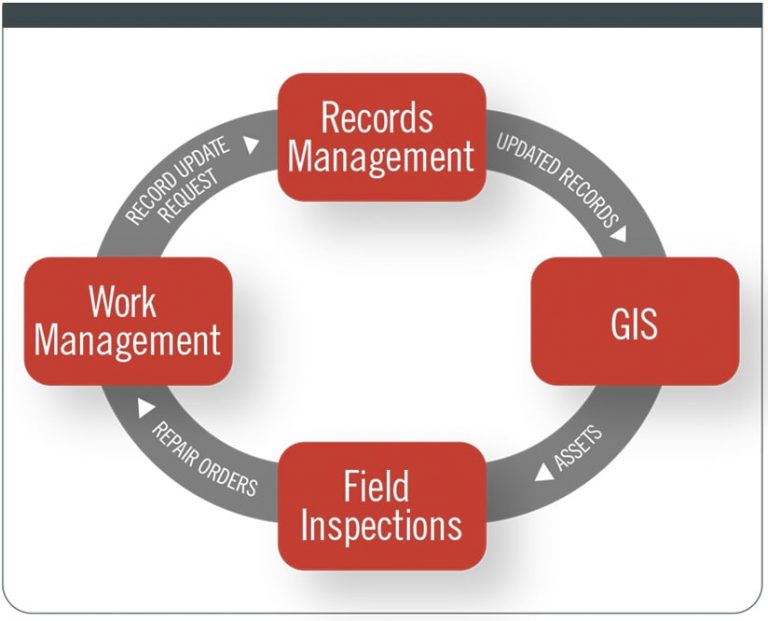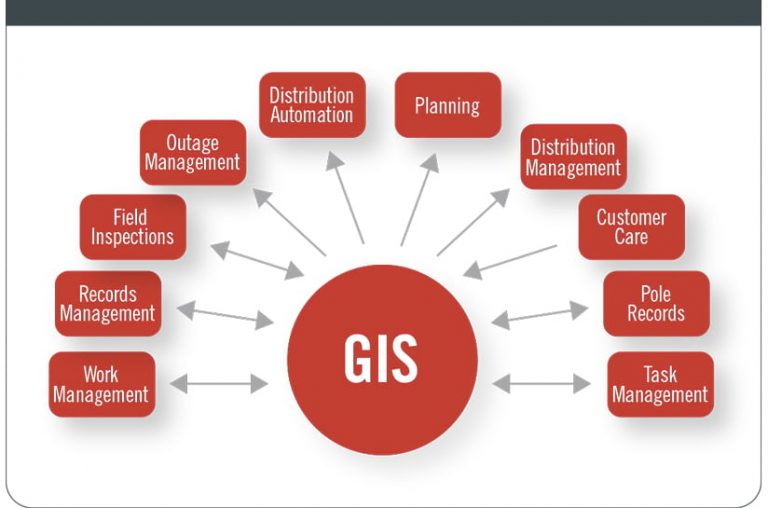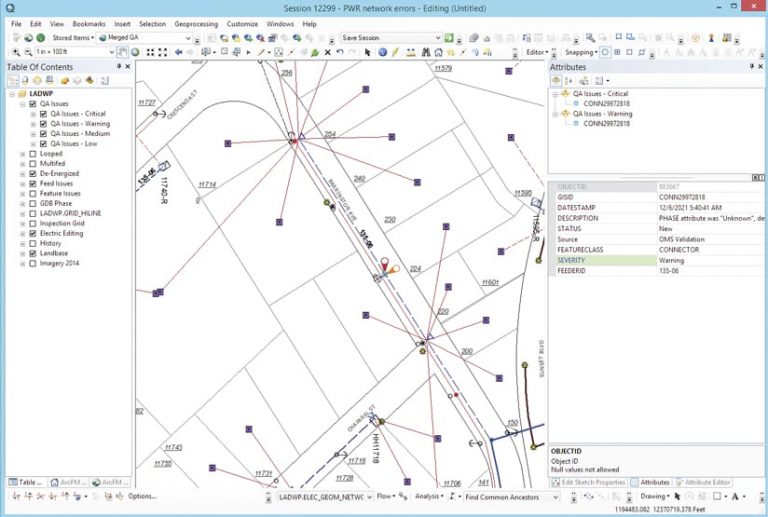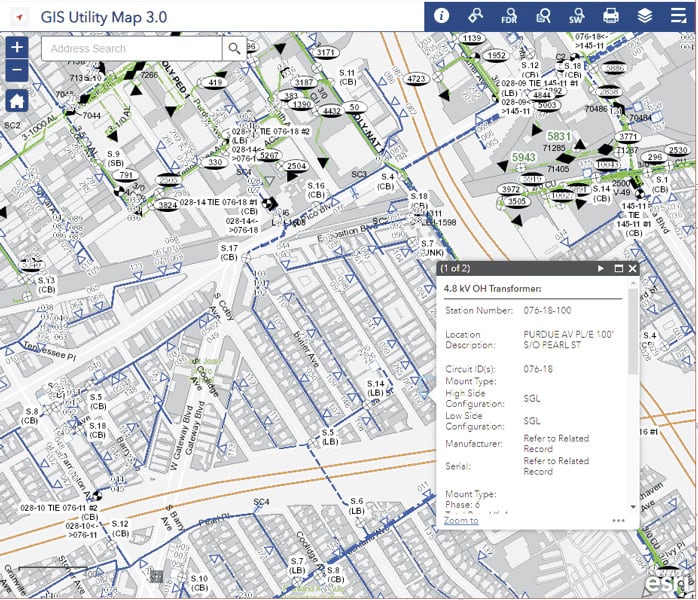As the largest municipal water and power utility in the United States, the Los Angeles Department of Water and Power (LADWP) in California faces unique challenges. Several years ago, aging mainframe applications and information silos were making it difficult for the organization to maintain accurate and timely data for assets in its electric distribution system.
To solve this problem, the IT team at the LADWP Power System configured and implemented a new enterprise-wide GIS platform, based on ArcGIS Enterprise, along with several key apps aimed at uniting operations and workflows. This new, modern GIS implementation is now gaining traction within the organization, and the department is beginning to see big returns on its investment. Ensuring that more employees have access to timely and consistent data is driving positive process changes, increasing efficiency, and improving safety throughout LADWP.

Enterprise GIS Shortens the Data Life Cycle
The traditional GIS data workflow in most utilities is complex. During long construction projects and complicated operations, it takes time to receive and process data updates. In some cases, mobile crews and operations staff reference and maintain paper records. GIS can become one of the last systems to be updated with new and time-sensitive data from the field.
To condense how long it took to get data from the field into LADWP’s GIS, the IT team at the LADWP Power System set out to develop an ArcGIS technology-centric GIS architecture and replace the organization’s existing field inspection apps with a new mobile system. Esri partner POWER Engineers, a global engineering and environmental consulting firm, was brought in to help with change management, data conversion, system architecture and administration, and the development of custom GIS apps and interfaces.
The team incorporated solutions from a range of Esri partners. Along with ArcGIS Enterprise, Schneider Electric’s ArcFM forms the basis of LADWP’s enterprise GIS. SSP Innovations’ Mobile Information Management System (MIMS) was customized to meet the organization’s field inspection requirements. Cityworks AMS (asset management system) was implemented to manage in-office task flows for inspection, maintenance, and engineering design activities. Additionally, ArcGIS web services and web maps further expanded what kinds of data are available to users through a web browser.

LADWP ultimately ended up with an enterprise geodatabase that could serve as the single source of truth for distributed electrical assets and integrated enterprise systems.
Quicker Access to Data Makes Processes More Efficient
One of the major advantages of LADWP’s enterprise GIS is how timely and widely available its data is.
By leveraging new data synchronization technologies along with ArcGIS web services, the department’s more modern GIS data life cycle makes inspection information available immediately to users both in the office and out in the field. For example, outage management system dispatchers can search and browse GIS data via the published maps in LADWP’s ArcGIS Enterprise portal, giving them immediate access to any changes made by records management staff.
Automated nightly updates from the customer care system also keep the GIS synchronized with modifications made to customer information. Because GIS underlies LADWP’s fully connected network model, which traces everything from circuit sources to customer service locations, it is now easier for LADWP Power System employees to determine which customers are connected to specific transformers. Additionally, the data relationships and electric distribution network model are widely available at LADWP, so employees on the outage management, distribution automation, planning, and distribution management teams all have access to them.
Integrations Save Time and Improve Data Consistency
Approximately 350 users employ LADWP’s new mobile inspection capabilities, which make it possible to do mapping and markups on the go. Any data that’s recorded in the field is synchronized to LADWP’s GIS in near real time.
This means, for example, that when a high-severity issue is reported from the field, a work request is automatically—and immediately—sent to the work management system for scheduling. This saves the team at LADWP Power System significant amounts of time when trying to schedule critical inspections. Since this integration was deployed in April 2019, more than 35,000 work requests have been created automatically, resulting in more than 5,000 hours of time saved in data entry alone.

The integration of LADWP’s mobile inspection capabilities with its work management system gives the organization’s field data a structure and consistency that it lacked before. This makes it easier for employees to put together reports and identify patterns indicating that process changes or engineering improvements need to take place.
The new system also makes it easier for mobile crews to take photos and mark them up with real-time inspection information. The markups are now more consistent, and this has improved reporting and record keeping. Records management staff members can process hundreds of markups each day and immediately make those edits available for all GIS data users. Since implementing this functionality about four years ago, staff members at LADWP’s Power System have processed more than 12,000 markups.
New App for Monitoring Pole Ownership Replaces Spreadsheets
One of the other tasks that employees at LADWP Power System perform is keeping track of who owns which utility poles, in accordance with requirements set out by the Southern California Joint Pole Committee. Before its enterprise GIS system was installed, LADWP was using spreadsheets, paper documents, and its legacy mainframe app to record joint utility pole ownership. This time-consuming approach, however, was producing inaccurate and out-of-date information that wasn’t easy to share.
So the team at POWER Engineers developed a pole data app to monitor pole owners, tenants (i.e., communications companies), and attached communication equipment. The app integrates with Cityworks AMS to track office workflow tasks, eliminating the need to do this via spreadsheets. Mobile work is also scheduled automatically through the system.

Since this was put into effect in March 2020, more than 4,000 work management requests have been automatically generated, saving the team at LADWP hundreds of hours of data entry time.
Real-Time Data and Increased Collaboration Promote Safety
LADWP Power System’s new enterprise GIS—complete with advanced field apps and integrated workflows—is improving productivity and increasing collaboration across the organization. Leveraging a GIS-based, single source of truth ensures that mobile crews have the real-time information they need to carry out field operations and that office personnel know what’s happening on the ground so they can make fast and effective decisions. Not only does this better support outage management and other work activities, but it also promotes safety.
At LADWP, safety comes first for employees, customers, and assets. Being able to identify unsafe conditions before they become problematic allows LADWP to better safeguard its employees, people’s property, and residents of Los Angeles.
Now that GIS is infused in all of LADWP Power Systems’ operations, it is easier for staff members to get an encompassing view of the utility’s electric distribution system. Mobile crews have critical geospatial data available at their fingertips, and staff members across the organization can see how various assets are connected to one another. This helps leaders at LADWP make quick decisions when it comes to safety. For an electric grid that serves more than four million people—especially in hot, dry, and often windy Southern California—that can make all the difference between a problem being a minor inconvenience or escalating into a major public safety event.


